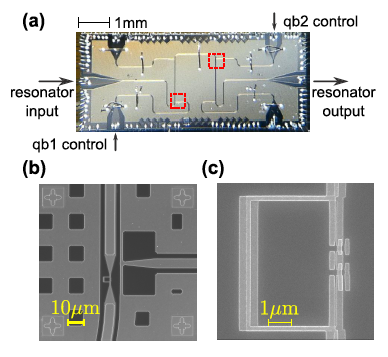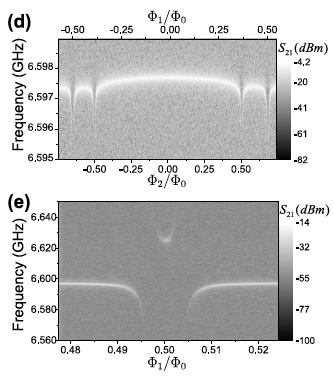We investigate the coherence properties of superconducting flux qubits. The long term goal is to develop the elements of a scalable platform for superconducting devices. In collaboration with other groups at IQC we work on developing suitable state encoding schemes for error correction.
Our devices are built on the circuit-QED architecture where a qubit is coupled to a coplanar-waveguide resonator, as can be seen in the figure [1]:

The flux qubit is galvanically attached to the center line of the resonator, allowing us to achieve coupling strengths of hundreds of MHz.
The spectroscopic signals that we typically observe correspond to avoided-level crossings of the resonator frequency [1]:

We can couple multiple qubits to the same resonator and combined with local-qubit control we are developing new schemes for quantum manipulation of qubit states.
We also investigated decoherence of superconducting flux qubits due to various sources, with a focus on flux noise and quariparticles.
[1] J.-L. Orgiazzi, et al., arxiv: 1407.1346.
